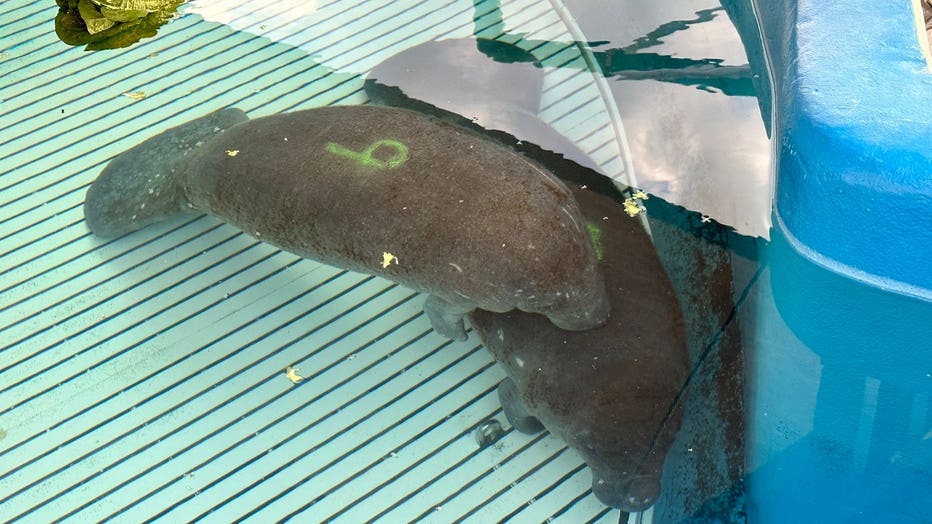How growing more seagrass may help keep more Florida manatees alive
New project to grow seagrass for struggling manatee population
At SeaWorld Orlando's Rescue Center, all the animals in their care are either rescued or in the process of being rehabilitated, including two new manatees that arrived on Tuesday. The two baby manatees came from Charlotte County where they acquired skin infections and became cold-stressed.
ORLANDO, Fla. - Florida's manatee population is dying in record numbers. In fact, the latest numbers show a total of 800 manatees died last year alone. One of the biggest problems is a lack of the sea cows' favorite food – seagrass.
At SeaWorld Orlando's Rescue Center, all the animals in their care are either rescued or in the process of being rehabilitated, including two new manatees that arrived on Tuesday. The two baby manatees came from Charlotte County where they acquired skin infections and became cold-stressed.
"Their body gets super cold, they get dehydrated, they’re not eating as well. It makes them more prone to developing infections, and they can’t move as well," said Tatiana Weisbrod a SeaWorld veterinarian.

Two baby manatees were rescued and brought to SeaWorld Orlando's Rescue Center.
SeaWorld Orlando has already rescued nine manatees this year, most with cold stress. As the weather cools, manatees seek out warmer water, but sometimes a cold snap outpaces them and end up needing help.
"We are one of just a handful of critical care facilities in the state," said Candace Moore, an animal care specialist at SeaWorld Orlando.
SeaWorld is also working to save manatees in other ways.
The Hubbs SeaWorld Research Institute recently partnered up with the Brevard Zoo to build a new seagrass nursery in Melbourne Beach. That partnership hopes to ease some of the strain on that food source. That extra food supply will be a great thing – these guys can eat a truly impressive amount of greens.
The seagrass nursery at Melbourne Beach should be open in a few weeks and all the manatees in SeaWorld Orlando's care should be released into the wild soon.
"Our whole goal with the manatee rescue program is to try to get these animals in and out as quickly as possible," Moore added.
The baby manatees have X-rays coming up on Thursday. They will probably be under SeaWorld Orlando's care for the next several months.

